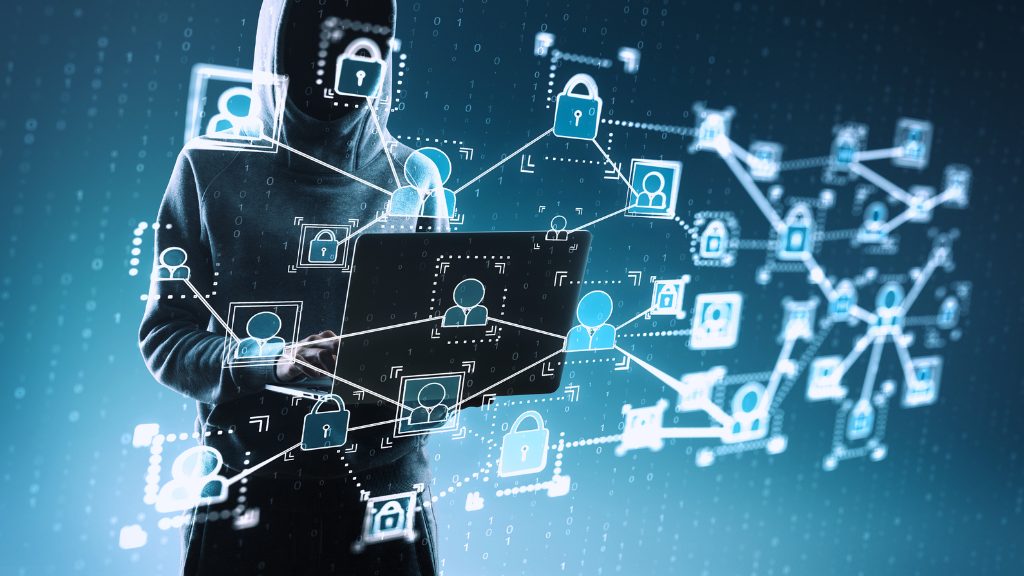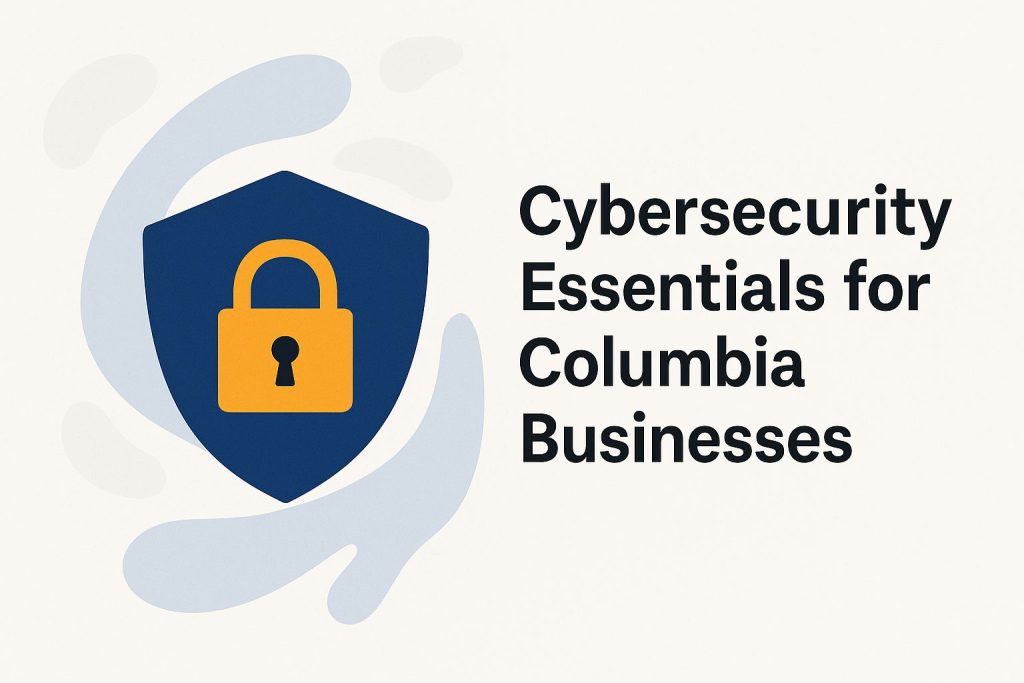Common Cybersecurity Threats and How to Protect Against Them
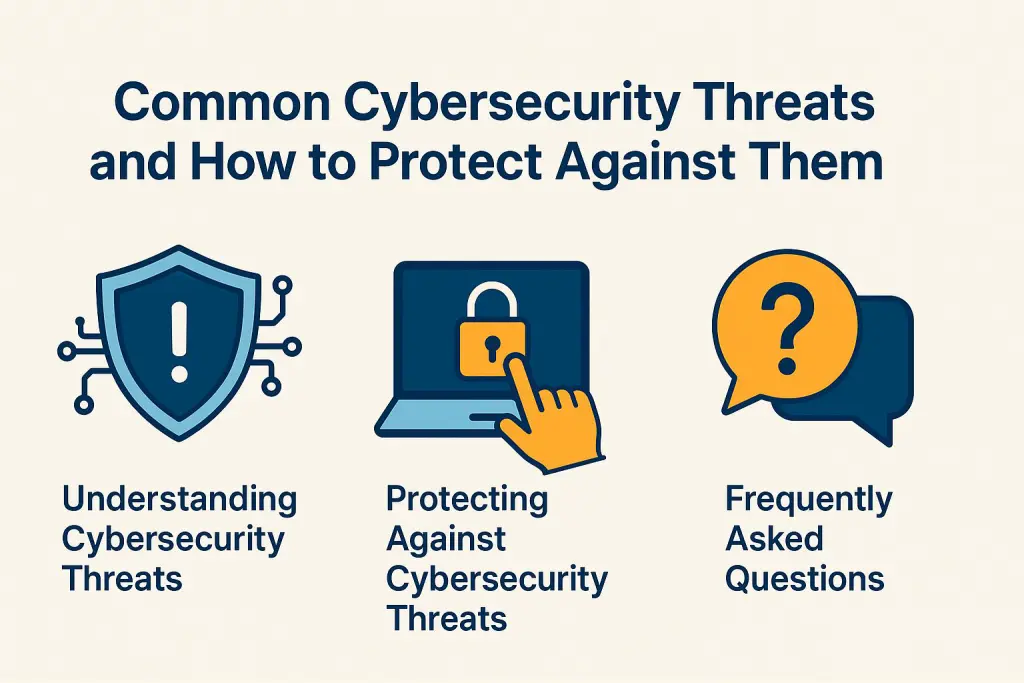
In today’s digital world, understanding cybersecurity threats is crucial. Malware and phishing can compromise sensitive information. This article explores the different categories of cybersecurity threats and their potential impacts, providing a comprehensive overview of the risks organizations face in the ever-evolving threat landscape. It discusses practical strategies and effective tools to safeguard against these dangers, helping with enhancing cybersecurity posture and protecting what is most valuable.
Understanding Cybersecurity Threats
Understanding cybersecurity threats is crucial in today’s digital landscape, where both businesses and individuals encounter a wide array of dangers.
Cybersecurity threats can harm information systems.
Malware includes viruses, worms, and trojans. Each can disrupt computer networks.
Phishing attacks use deceptive emails or messages. They trick people into visiting sites that steal personal information.
Each of these threats presents specific risks to sensitive data and overall network security, underscoring the necessity for organizations to implement robust cybersecurity frameworks and strategies.
From the advanced techniques employed by threat actors to exploit vulnerabilities to the significance of cybersecurity awareness training, comprehending these risks is essential for effective incident response and prevention (see our guide on top cybersecurity threats in Columbia for more insights).
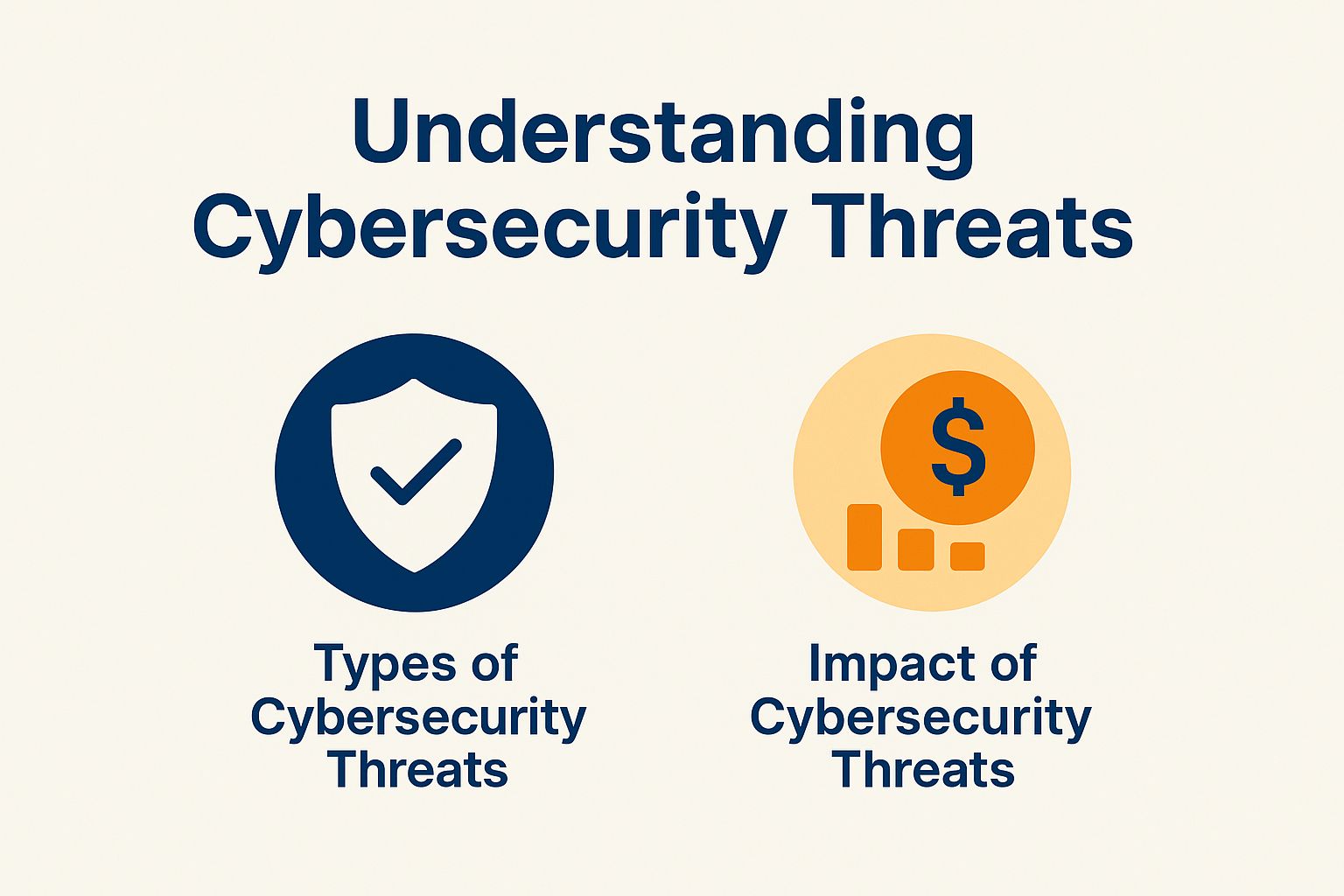
Types of Cybersecurity Threats
Various types of cybersecurity threats can compromise the integrity of information systems.
Among these, malware represents a broad category that includes subtypes such as viruses, worms, and trojans, each capable of causing significant disruption to computer networks. Phishing attacks often employ deceptive emails or messages that entice individuals to visit sites designed to harvest personal information. Many organizations have fallen victim to such tactics, leading to substantial financial losses and data breaches.
Ransomware locks files until a ransom is paid, disrupting operations. Additionally, Denial of Service (DoS) attacks flood a network with too much traffic. This stops legitimate requests.
Insider threats present unique challenges, as they originate from individuals within the organization. This circumstance underscores the necessity for robust monitoring and employee training to effectively mitigate risks.
Impact of Cybersecurity Threats
Cybersecurity threats can harm organizations and individuals. They lead to data breaches and identity theft. The impact of cybersecurity threats can be devastating for organizations and individuals, leading to significant data breaches, incidents of identity theft, and the growing concern of cybercrime. These security incidents not only result in financial losses but also damage reputations and erode trust among customers.
A robust understanding of potential cyber risks is essential for the development of effective cybersecurity policies and risk management strategies.
Not addressing vulnerabilities can lead to legal issues and financial penalties. Failure to address these vulnerabilities can lead to severe repercussions, including legal liabilities and compliance penalties that may financially cripple an organization. The operational disruptions caused by cyberattacks can result in decreased productivity and a loss of competitive advantage in the marketplace.
It is imperative for businesses to adopt a proactive approach to data breach management and implement effective responses to security incidents. Businesses must take a proactive approach to managing data breaches and responding to security incidents. Prioritizing employee training and investing in cybersecurity infrastructure can significantly mitigate risks, helping to safeguard sensitive information and maintain customer confidence.
Protecting Against Cybersecurity Threats
To protect against threats, organizations need strong security practices and proactive strategies. This includes best practices, strong security protocols, and proactive prevention strategies. Protecting against cybersecurity threats necessitates a comprehensive approach that incorporates the implementation of cybersecurity best practices, robust security protocols, and proactive cyber threat prevention strategies.
Organizations should utilize antivirus software to effectively detect and eliminate malware while employing encryption to safeguard sensitive data both in transit and at rest, and ensure robust data encryption practices. For an extensive analysis of this trend, our deep dive into the top cybersecurity threats facing businesses examines how these measures can be optimized.
Additionally, multi-factor authentication provides a crucial layer of security, significantly minimizing the risk of unauthorized access and verifying that users are indeed who they claim to be.
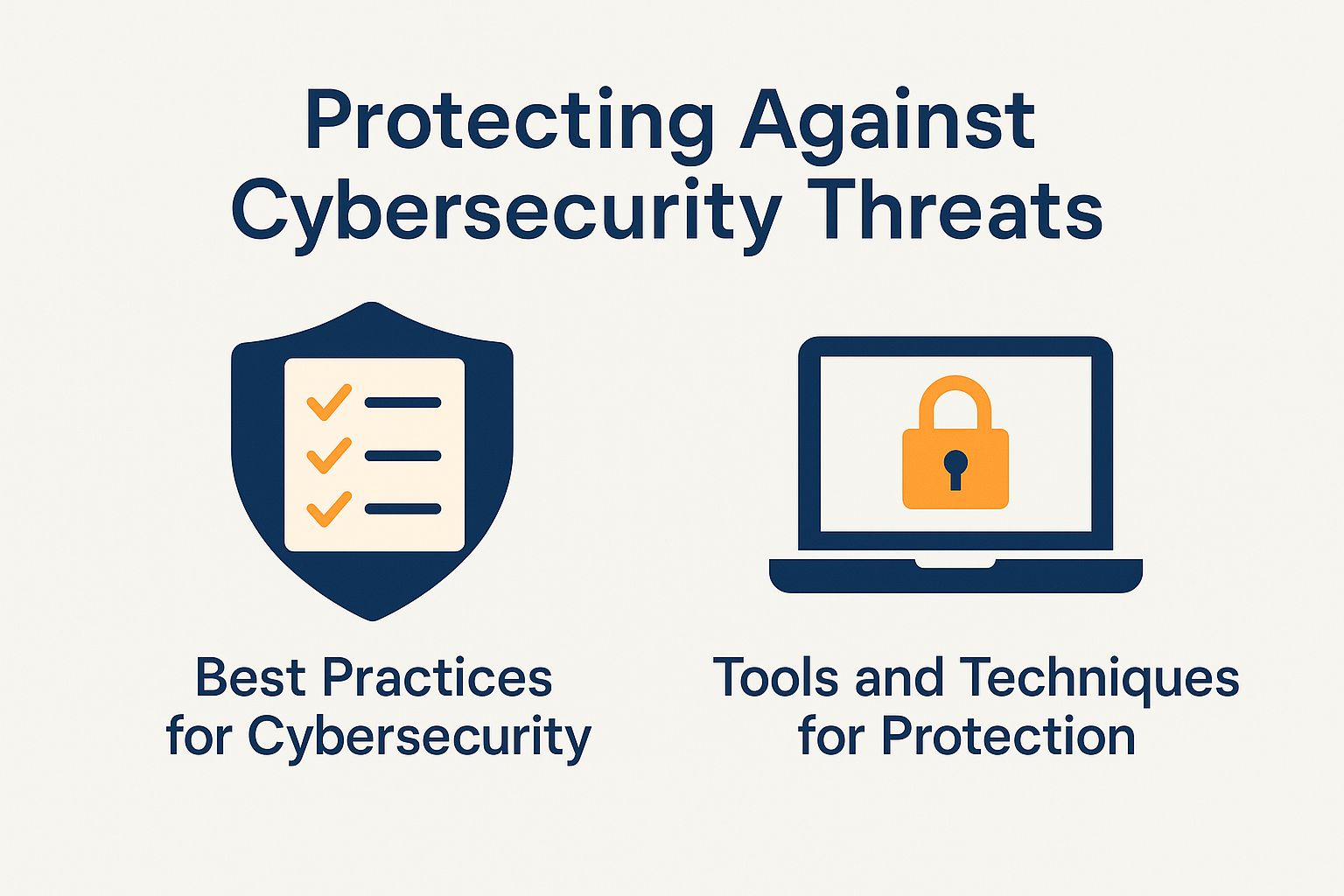
Best Practices for Cybersecurity
Best practices help maintain cyber hygiene and protect information.
Organizations should focus on training employees about security. This helps them recognize phishing and social engineering attacks.
Managing passwords well and conducting regular security audits are crucial. They help meet regulations and reduce vulnerabilities.
A strong incident response plan helps organizations recover quickly from breaches. It also ensures effective management of incidents. The plan should have regular drills. This prepares staff for real-life situations and clarifies their roles during cyber incidents.
Organizations can strengthen defenses with multi-factor authentication. This adds an extra layer of security for user accounts. Regularly updating software is crucial. It patches vulnerabilities that cybercriminals may exploit. To further safeguard your business, stay informed of the key strategies to stay ahead of hackers and protect your digital assets.
These strategies protect organization assets and build trust with clients and stakeholders by improving security compliance.
Tools and Techniques for Protection
Using various tools and techniques is essential for building strong defenses against cybersecurity threats. Firewalls monitor traffic to prevent unauthorized access.
Intrusion detection systems and endpoint protection solutions provide critical visibility into network security, helping to identify potential threats through threat intelligence.
These systems not only detect anomalous activities but also alert security teams for rapid response, ensuring minimal disruption through effective threat detection and mitigation. Endpoint security solutions play a vital role in safeguarding individual devices from malware and phishing attempts, which is increasingly important as remote work becomes more prevalent.
By using these technologies, organizations can create a flexible security approach that adapts to new threats. It is important to note that while firewalls and intrusion detection systems are crucial for digital security, using advanced analytics improves effectiveness and enables proactive defenses against cyber threats.
Frequently Asked Questions
What are common cybersecurity threats?
Common cybersecurity threats include malware, phishing, hacking, social engineering, ransomware, and insider threats.
How can I protect myself from cyber attacks?
You can protect yourself from cyber attacks by using strong passwords, updating your software and devices regularly, being cautious of suspicious emails and links, and implementing strong security measures such as firewalls and antivirus software.
What is the best way to protect my personal information online?
The best way to protect your personal information online is to limit the amount of information you share, use privacy settings on social media, avoid using public Wi-Fi for sensitive activities, and regularly check your financial accounts for any suspicious activity.
What is the most common type of cybersecurity threat?
The most common type of cybersecurity threat is phishing. Phishing attacks use fake emails or websites to trick individuals into giving away sensitive information such as passwords, credit card numbers, or bank account information.
How can businesses protect their sensitive data from cyber attacks and ensure robust cyber defense?
Businesses can protect their sensitive data from cyber attacks by implementing strong security protocols, regularly backing up important data, educating employees on cybersecurity best practices, and conducting regular vulnerability assessments.
How can I prevent my computer from being infected by malware?
You can prevent your computer from being infected by malware by installing reputable antivirus software, avoiding downloading files from unknown sources, and being cautious of suspicious emails and links.

